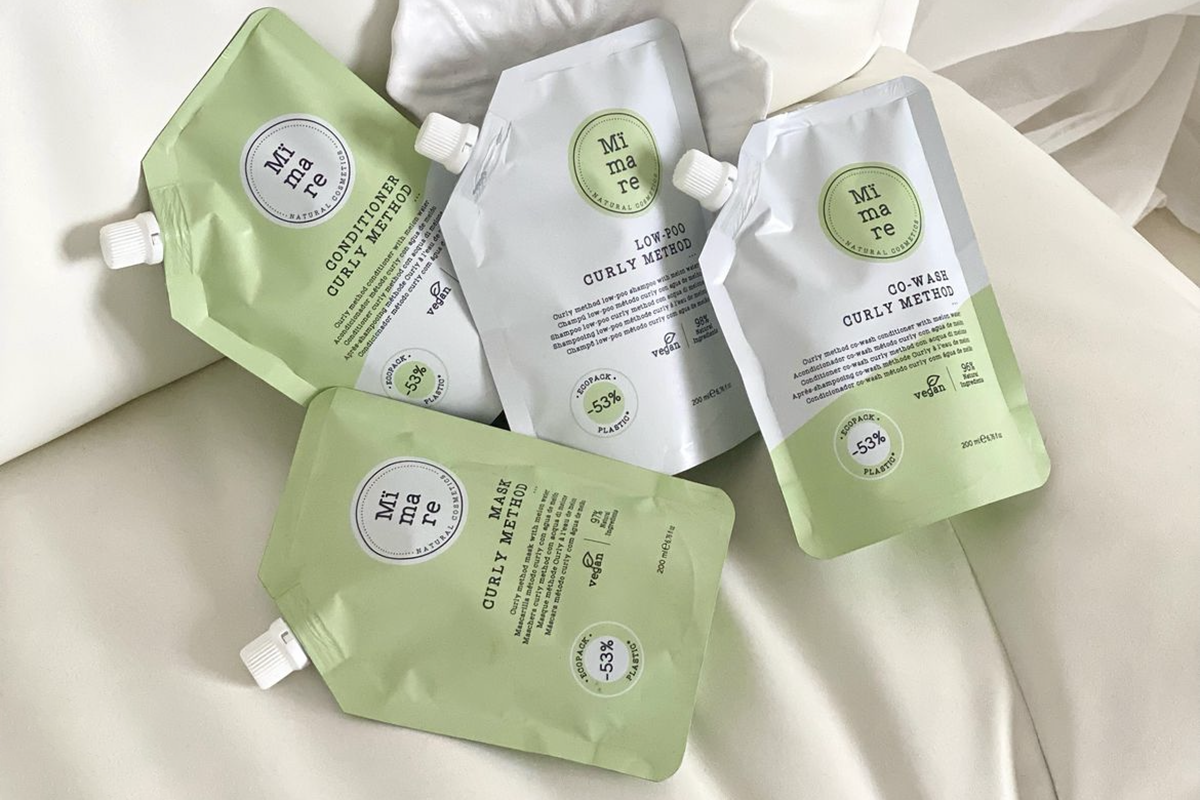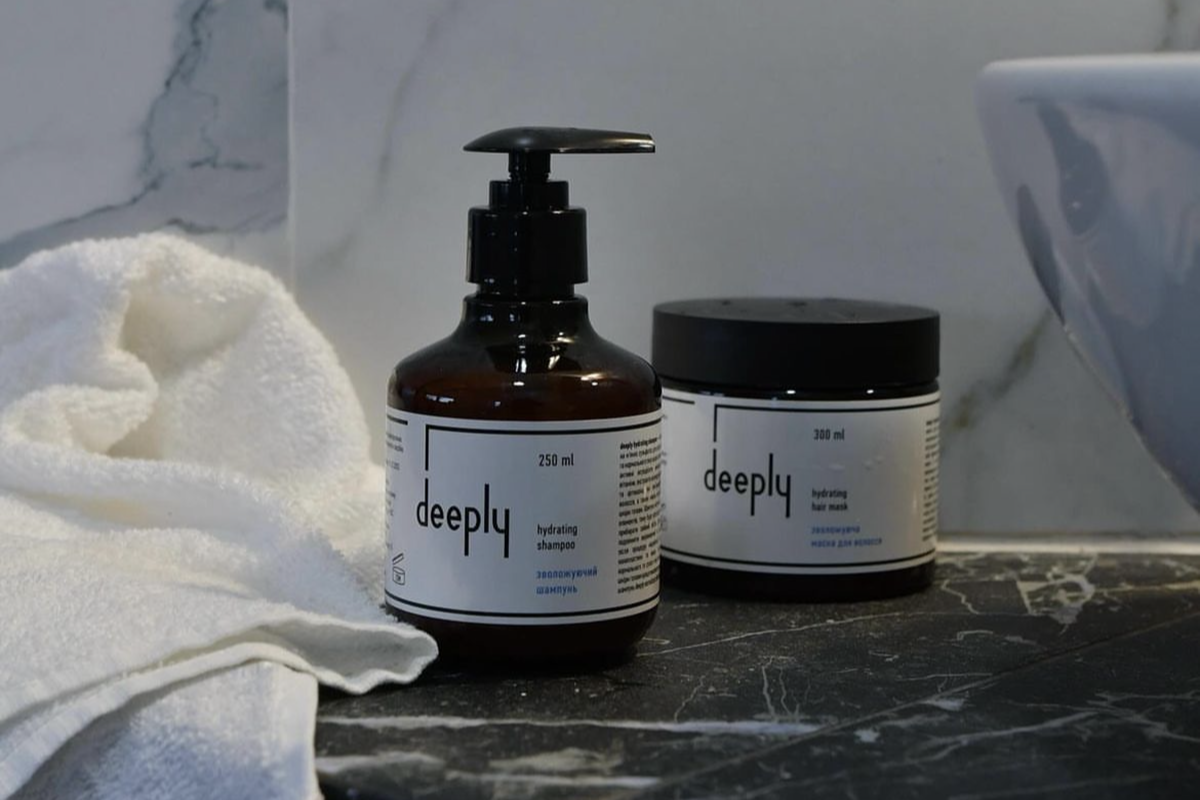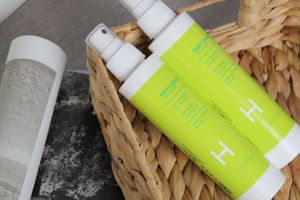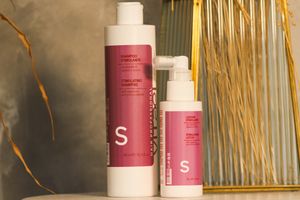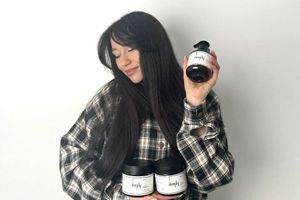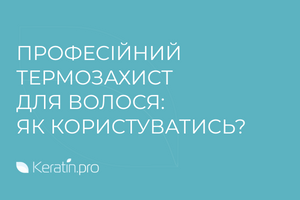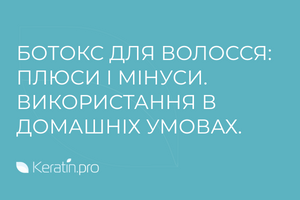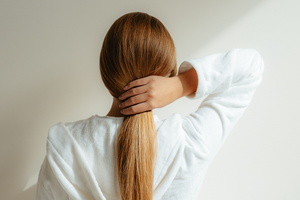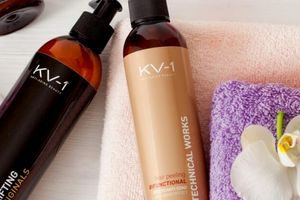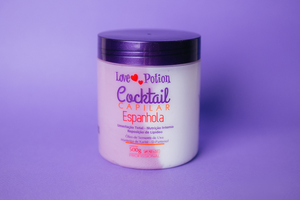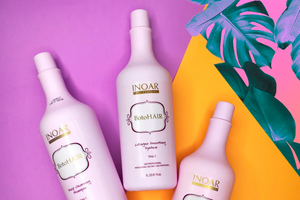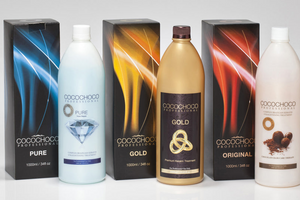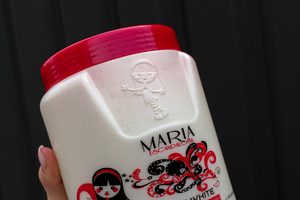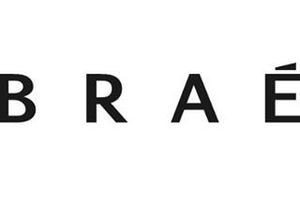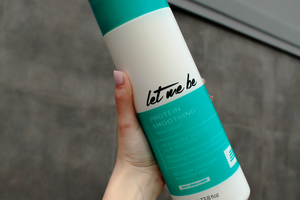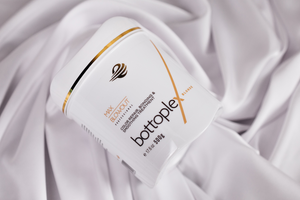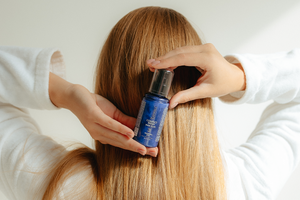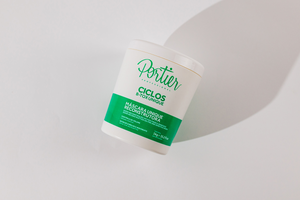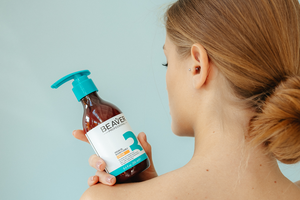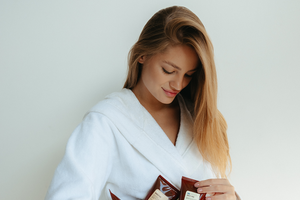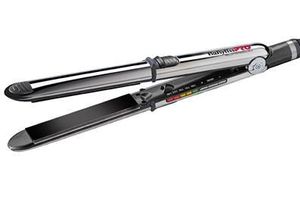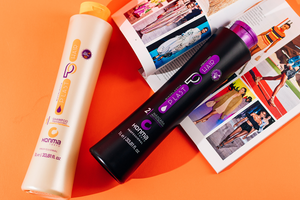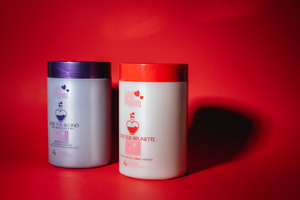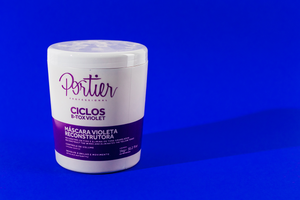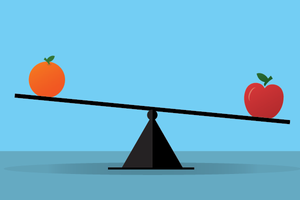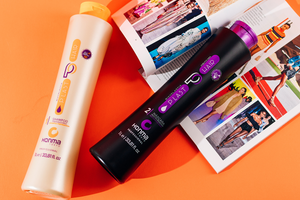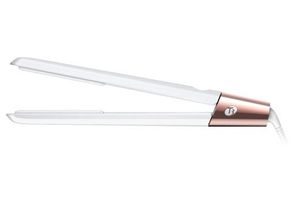Do you have hair problems? You are not alone! Hair problems are extremely common, and sooner or later they affect everyone. Whether you're dealing with frizzy, brittle, or weak hair, there are solutions that will definitely help you. We've compiled everything you need to know about hair, the most common problems people face, and ways to avoid and solve them.
What is hair? Its structure
Hair is a dead structure made up of dead cells. The living part is the root, where nutrients are absorbed and cells divide. As the hair grows, it becomes dense, strong and eventually dies. Its condition and structure are affected by the environment, mechanical and thermal effects, sunlight, water, salon procedures and home care.
The root is located in the scalp and remains invisible from the outside. It is the living part of the hair, which is located in the dermis at a depth of about 3 mm in the hair follicle. The widest part of the root is called the hair follicle. The root reacts to all nutrients and harmful substances that enter our body.
The shaft is the visible part of the hair, which consists of keratinized (dead) epidermal cells. This is the part we usually call hair.
Common hair problems
Hair has always been a symbol of beauty and health, an expression of individuality and style. However, like any part of our body, it needs constant attention and care. Modern lifestyles, including stress, unbalanced diet, and harmful environmental conditions, often have a negative impact on the condition of our hair. Common hair problems, such as hair loss, breakage, dryness, or greasiness, can not only reduce our self-confidence, but also signal more serious health issues. In this text, we'll take a look at the most common hair problems, their causes, and effective treatments to help you maintain the beauty and health of your hair.
Hair frizziness
Hair frizz (also known as frizz) is a problem that many people experience, especially those with curly or wavy hair. Frizz occurs when the hair becomes dry, damaged, or loses moisture, causing the hair cuticle to lift and create the appearance of "frizziness."
Understanding the causes of frizzy hair and taking proper care can help reduce this problem and make your hair healthier and more manageable.
Causes of frizzy hair:
- Humidity: The hair absorbs moisture from the air, which causes the cuticle to swell and create frizz.
- Dry hair: Dry hair has increased porosity, so it easily absorbs moisture from the air.
- Thermal and chemical damage: Frequent use of hair dryers, curling irons, as well as chemical procedures (dyeing, perming) damage the hair, making it fluffy.
- Improper care: Using the wrong products or techniques for hair care can exacerbate frizz.
- Hair structure: Curly and wavy hair is more prone to frizz due to its natural structure.
To tame frizz, start by washing your hair with a nourishing, sulfate-free shampoo and conditioner designed to tame frizz.
We recommend that you pay attention to cosmetics from the Mimare brand, especially their series for curly hair. The shampoo, conditioner and mask for curly hair will help to make your curly hair firm, elastic and clearly define the curls. If you want to smooth out unwanted frizz, choose products with an anti-frizz effect: Mimare Anti-Frizz Shampoo and Mimare Anti-Frizz Mask.
You can also use a hair cream or oil to help control frizz and add extra moisture to your hair. Avoid using heat tools such as hair dryers and straighteners while styling as the heat can exacerbate frizz. Instead, use air drying or diffusing your hair with a hair dryer with a diffuser attachment.
Hair damage
Hair damage can be caused by a variety of factors that affect its structure and health. The main causes of hair damage include physical, chemical and environmental factors. Excessive combing, the use of hard combs, and frequent use of styling tools (hair dryers, curling irons, flat irons) can lead to brittle hair. Aggressive chemicals contained in dyes and curling products can damage the cuticle (the outer layer of the hair), making the hair weak and brittle. Prolonged exposure to sunlight can also dry out the hair and damage its structure.
Prevent and treat damaged hair:
- Use mild, sulfate-free shampoos.
- Regularly apply conditioners and masks for deep moisturizing.
- Avoid excessive styling and the use of hard tools.
- Wear hats or use special products with UV protection.
- Trim the ends every 6-8 weeks to prevent split ends and improve the overall condition of your hair.
Proper care and preventive measures can help keep your hair healthy and beautiful, even in the presence of factors that cause damage. Use cosmetics from the Ukrainian brand Deeply to provide your hair with high-quality and deep care. Their range includes a large number of products that are ideal for damaged hair, such as Deeply Sulfate-free Shampoo, Deeply Hydrating Mask, Deeply Hydrating Conditioner, and others.
Hair loss
Hair loss (alopecia) is a process of hair loss that can occur on different parts of the body, but is most common on the head. It can be a normal phenomenon (e.g., losing a few hairs every day) or a symptom of a disease. There are many causes of hair loss, and they can range from temporary conditions to permanent ones. Vitael products from the HAIR LOSS series will help you treat hair loss that is associated with external factors.
Causes of hair loss:
- If your family has a history of early or sudden hair loss, you may be at risk of the same problem. This is the most common cause in men and is called androgenetic or hormonal alopecia.
- Severe stress that lasts for a long time can contribute to hair loss.
- Some scalp conditions, such as dermatitis, psoriasis, or other infections, can cause hair loss.
- Not getting enough nutrients, such as iron, zinc, and B vitamins, can lead to hair loss.
- Certain medications, such as antidepressants, cold medications, or other medications, can have the side effect of hair loss.
Treatment for hair loss can vary depending on the cause. Restoring a healthy lifestyle, changing your diet, and using medications or treatments are some of the possible treatments. In severe cases, you may need to consult a doctor to determine the most effective treatment plan.
Using mild shampoos and conditioners, avoiding excessive use of hot styling tools, and massaging your scalp can improve hair health and reduce hair loss. Add Vitael ampoules and lotion to your arsenal to maximize results.
Dandruff and seborrhea
Dandruff and seborrhea are two related scalp conditions that often cause discomfort and can affect quality of life. Let's take a closer look at each of them.
Dandruff (Latin: Pityriasis simplex capillitii)
Dandruff is a condition in which the scalp flakes off, forming small white or gray scales. These scales are often visible on the hair and shoulders, which can cause discomfort and aesthetic discomfort.
Causes of dandruff:
- Dry skin: This is the most common cause of dandruff, especially in winter when the air is dry.
- Seborrheic dermatitis: This is an inflammatory skin disease that is one of the main causes of dandruff.
- Microscopic Malassezia fungus: This fungus lives on the scalp of most adults, but sometimes it can cause skin irritation and excessive flaking.
- Improper hair care: Using poor quality shampoos or not washing your hair regularly can also contribute to dandruff.
- Health conditions: Illness, stress, and poor diet can also contribute to dandruff.
Treatment of dandruff:
- Use of special anti-dandruff shampoos that contain active ingredients such as zinc pyrithione, salicylic acid, selenium sulfide, or ketoconazole. We have selected the best anti-dandruff shampoos: Vitael Dandruff Shampoo. Use auxiliary products that will help maintain healthy skin, such as Vitael Purifying Lotion Anti-Dandruff, Deeply scalp scrub with apricot kernel, Deeply Refreshing Scalp Peeling.
- Regular shampooing and proper scalp care.
- Changing your diet to include more healthy fats, vitamins and minerals.
Seborrhea (lat. Seborrhoea)
Seborrhea is a skin disease characterized by excessive sebum production. It can occur on the scalp as well as other parts of the body, such as the face, chest, and back.
Causes of seborrhea:
- Hormonal changes: Seborrhea is often associated with hormonal changes such as adolescence or pregnancy.
- Genetic factors: Heredity can play a significant role in predisposition to seborrhea.
- Microbial factor: Malassezia, as with dandruff, can contribute to the development of seborrhea.
- Health conditions: Diseases such as Parkinson's disease, depression, or certain neurological disorders can be associated with seborrhea.
Symptoms of seborrhea:
- Oily scalp.
- Yellow or white scales on the scalp and other parts of the body.
- Redness and itching.
Treatment of seborrhea:
- Use of special shampoos and cosmetics containing antifungal or antiseborrheic components.
- Compliance with hygiene rules and regular skin care.
- In severe cases, medications such as corticosteroids or antifungal agents may be prescribed.
Prevention and care
The following recommendations should be followed for scalp prevention and care:
- Wash your scalp regularly with appropriate products.
- Avoid excessive use of hair products such as gels and sprays.
- Eat a balanced diet rich in vitamins and minerals.
- Reduce stressors in your daily life.
Understanding the causes and symptoms of dandruff and seborrhea will help you to manage these conditions more effectively and improve your quality of life.
Oily hair
Oily hair is a hair condition where the sebaceous glands of the scalp produce excessive amounts of sebum. This causes the hair to look greasy, shiny, and heavy. The problem of oily hair can be due to a variety of factors, including genetics, hormonal imbalances, improper hair care, and other external and internal factors.
Causes of oily hair:
- Genetics: If you have a family history of oily scalp, you are likely to experience this problem as well.
- Hormones: Hormonal changes, such as those that occur during puberty, menstruation, pregnancy, or menopause, can affect sebum production.
- Improper hair care: Washing your hair frequently, using the wrong products, or not rinsing your shampoo enough can stimulate the sebaceous glands.
- Stress: High stress levels can contribute to increased sebum production.
- Diet: High levels of fat and carbohydrates in the diet can also contribute to oily hair.
Tips for oily hair care:
- Use a shampoo formulated specifically for oily hair. It usually has a formula that helps regulate sebum production. For example, Vitael Normalizing Shampoo for oily scalp or Deeply Normalizing Shampoo.
- Hot water can stimulate the sebaceous glands, so it is better to wash your hair with lukewarm or cool water.
- Apply the conditioner only to the ends of the hair so as not to weigh down the roots.
- Clean combs and brushes regularly, as they can accumulate grease, which is then transferred to clean hair.
Oily hair can be caused by many factors, but proper care and the right products can significantly improve its condition.























